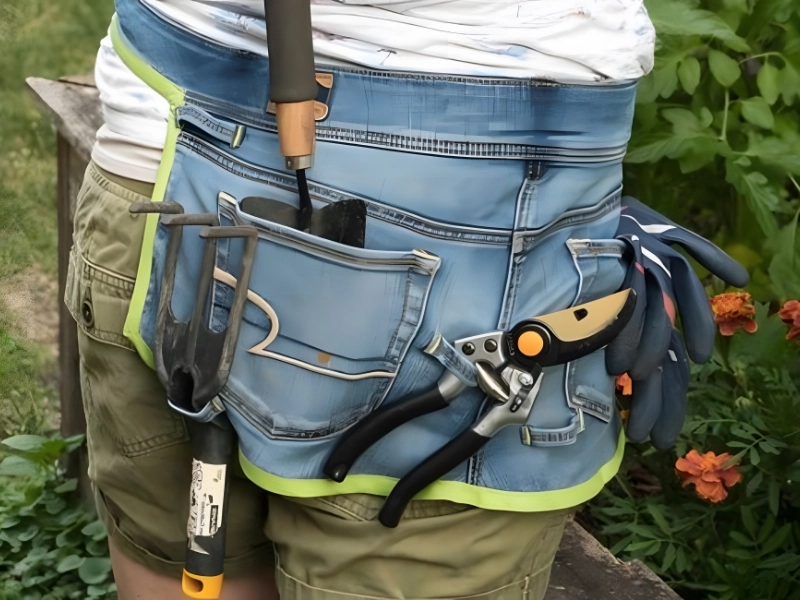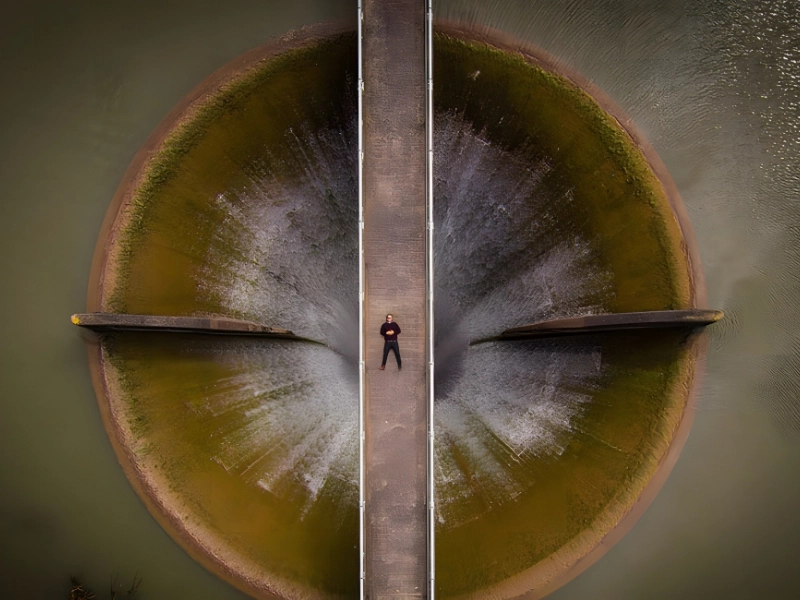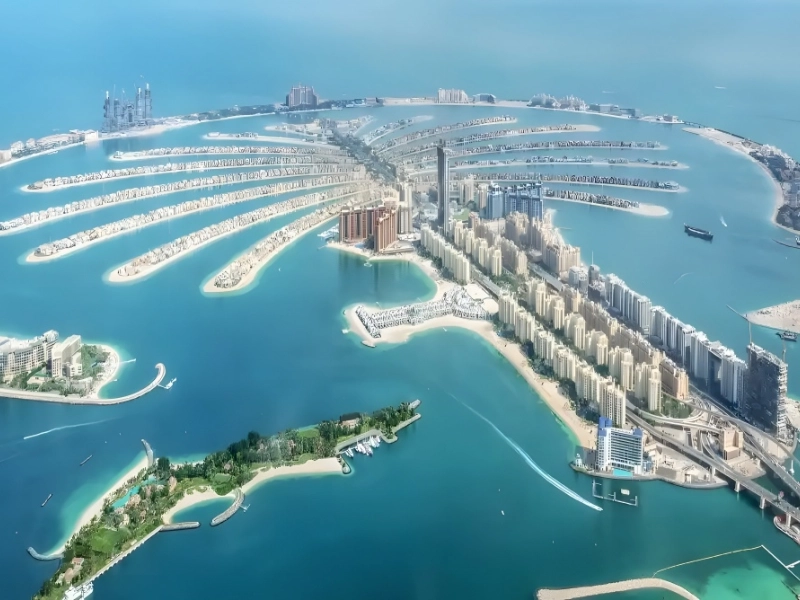6. Juxtaposition
Possible drone: Mavic 2 Pro from DJI
Where to Purchase: DJI UAVs
Expense: $1,599–$2,049 *
"Juxtaposition," captured by Manish Mamtani using a DJI Mavic Pro drone, was another entry in the SkyPixel competition. The image shows a car junkyard surrounded by stunning fall foliage, despite the yard's boring, blue-grey exterior. Mamtani said that there were many similarities between the fall and the junkyard.
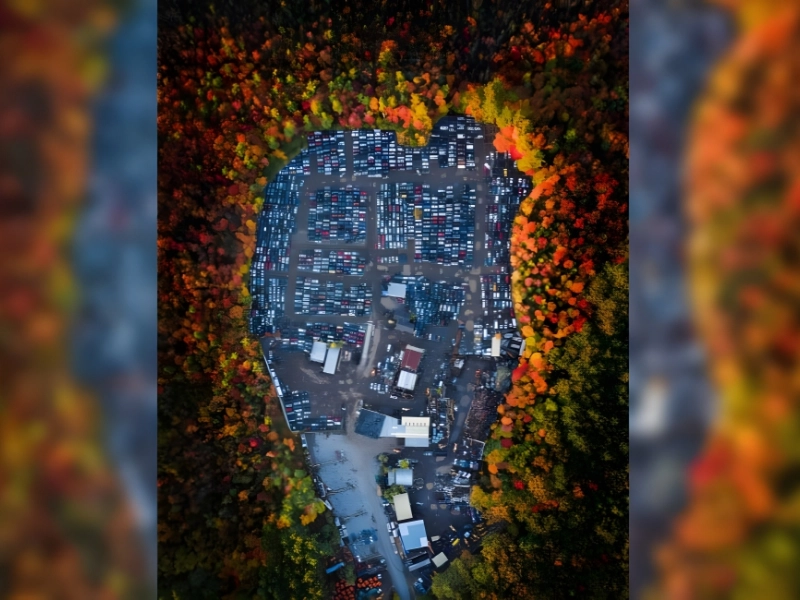
Advertisement
@Manish Mamtani/SkyPixel.com Juxtaposition
"Whereas humans are junking cars, nature is getting rid of leaves," Mamtani remarked. He described one as "pure junk" and the other as "natural degradation." Unquestionably, the junkyard appears to be a small, chilly center surrounded by a fiery landscape in this overhead shot, true to the name.
7. Spillway Selfie
Potential Drone: DJI Phantom 3
Purchase Location: Adorama
Price: $399* (used)
Brendon Dixon took a photo of himself lying down on the Huia Dam, which he dubbed a "Spillway Selfie." Dixon won second prize in the SkyPixel competition with his entry. Dixon took this picture with a DJI Phantom 3, which is among the company's cheapest models and, in the words of the manufacturer, the "ideal drone" for a "beginner."
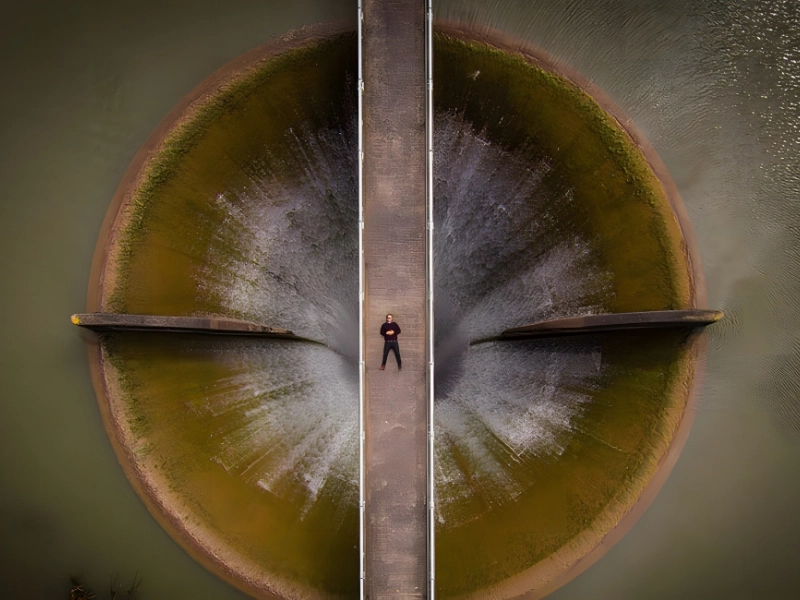
Spillway Selfie, SkyPixel.com, and Brendan Dixon
The Upper Huia Dam, located near Auckland, New Zealand, is a significant piece of infrastructure with a rich history. This dam was opened in 1929, making it considerably older than its counterpart, the Lower Huia Dam, which began operations in 1971. The Upper Huia Dam has stood the test of time and remains a crucial component of Auckland's water supply system.
Situated in the scenic Waitākere Ranges, the Huia Dam plays a vital role in providing water to the Auckland region. The area surrounding the dam is characterized by lush native forests and diverse wildlife, creating a picturesque and ecologically important environment. The dam itself is an impressive feat of engineering, designed to harness the natural water resources of the region to meet the needs of a growing urban population.
The history of the Huia Dam reflects the broader development of Auckland as a major city. In the early 20th century, as Auckland expanded, the demand for reliable sources of fresh water increased. The construction of the Upper Huia Dam was a response to this need, ensuring a steady supply of water to support the city's growth and development. Over the decades, the dam has undergone various upgrades and maintenance to ensure its continued functionality and safety.
In 1971, the addition of the Lower Huia Dam further enhanced the water supply network. Together, these two dams form a critical part of Auckland's water infrastructure, providing a significant portion of the city's water needs. The strategic location of the Huia Dam within the Waitākere Ranges allows it to capture and store rainwater effectively, which is then treated and distributed to households and businesses across Auckland.
The Huia Dam's contribution to Auckland's water supply cannot be overstated. It has been a reliable source of water for nearly a century, supporting the city's population and economic activities. The dam's presence has also facilitated the development of surrounding areas, contributing to the overall growth and prosperity of the Auckland region.
In summary, the Upper Huia Dam, with its long history dating back to 1929, and the newer Lower Huia Dam, opened in 1971, are essential components of Auckland's water supply system. Located in the beautiful Waitākere Ranges, these dams have played a crucial role in supporting the city's development and continue to be vital to its water infrastructure. Their legacy is one of engineering excellence and enduring importance to the people of Auckland.





